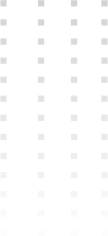New publication on characterization of in-plane shear deformation on molten composites laminates from unidirectional thermoplastic tape
Check the latest publication of Dennis Brands on the characterization of in-plane shear deformation on molten composites laminates from unidirectional thermoplastic tape. Improved characterization quality at processing conditions can be used to enhance the defect prediction in composite forming simulations.
The objective of this article is to demonstrate the application of the bias extension method on cross-ply UD thermoplastic composite specimens at forming conditions. The novelty of this work lies in the combination of the method and material. A second aspiration is to provide characterization datasets that can be used to develop constitutive models for input in composite forming simulations. The benefit of the bias extension method is the use of a representative specimen at forming conditions with loading that is representative for real forming processes. However, the typical pin-jointed net behavior observed in woven fabrics with interlocking fiber is not guaranteed in the case of UD materials because of specific spurious deformations that can occur for these materials, such as flow transverse to the fiber direction and relative slip between plies. Therefore, specimen deformations have been analyzed in this research to see if the appropriate in-plane shear deformation mechanism was dominant. This article is an extension of the preliminary results presented at the ESAFORM 2021 conference (Brands et al., 2021) and expands it with larger characterization datasets that include effects of temperature, insight into repeatability, improved clamping, and analysis on the onset of localization.
Dennis has performed this research at the TPRC in close cooperation with the Production Technology research group of Remko Akkerman from the University of Twente.
Deformed specimen after testing, secured in the clamps with thermocouples attached.




